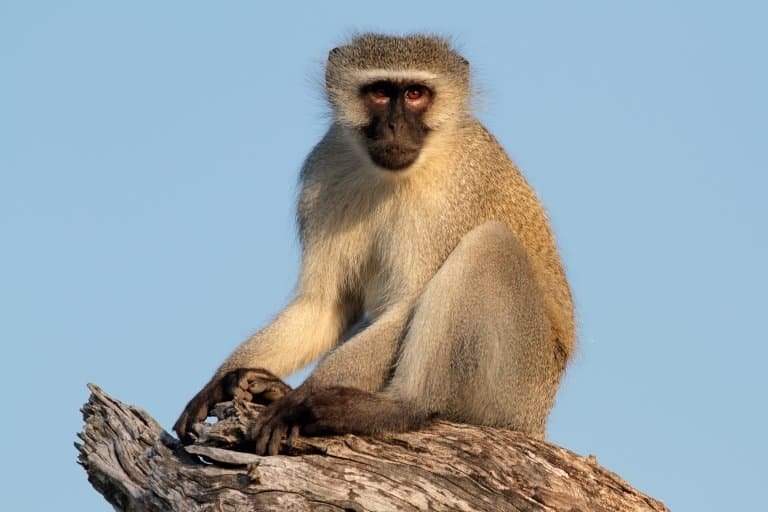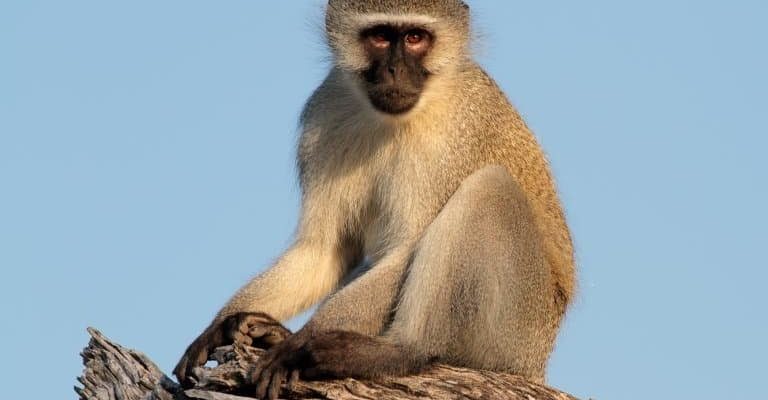
Found primarily in Africa, vervet monkeys are part of the larger baboon family but have unique features that define them. They are social animals that thrive in groups, making them a joy to observe in the wild. So, grab your favorite coffee, and let’s dive into some of the most intriguing facts about vervet monkeys that will make you appreciate these little beings even more!
1. They Have Colorful Facial Expressions
Did you know that vervet monkeys communicate using a mix of vocalizations and facial expressions? Their faces tell a story! Each monkey has a distinct set of facial markings that can indicate their emotional state. For instance, a relaxed monkey often has a calm expression, while one that feels threatened may raise its eyebrows and widen its eyes.
These monkeys also have a rich vocal repertoire. When they see a predator, vervets have specific alarm calls that warn others in their group. Honestly, it’s like their own little language! Each call is tailored to the threat, whether it’s an eagle soaring overhead or a leopard lurking nearby. It’s fascinating how these animals use both sounds and expressions to convey complex messages, just like we do in our daily conversations.
2. Vervet Monkeys Are Very Social Creatures
Vervet monkeys are all about community. They live in groups, known as troops, that can range from 10 to over 50 members. These troops are organized in a strict hierarchy, with dominant males and females leading the way. You might think of them as a family with a complex social structure—there are friendships, rivalries, and even alliances formed!
Here’s the thing: social bonds among vervet monkeys are vital for survival. They groom each other to strengthen these ties, which helps reduce stress and fosters a sense of solidarity within the group. Plus, grooming is more than just a nice way to stay clean. It’s a social activity that helps reinforce relationships, much like how we catch up over coffee with friends.
3. They Practice Stone Tool Use
You might be surprised to learn that vervet monkeys are skilled tool users. They have been observed using stones to crack open nuts and seeds, showcasing their intelligence. This behavior is not just instinct; it’s learned and shared within their communities. Watching them use stones is like witnessing an animal version of a cooking show—it’s impressive!
This skill puts them in a small group of primates known for using tools, alongside chimpanzees and capuchins. It raises the question: could they be on their way to developing even more complex behaviors? Watching vervet monkeys engage with their environment offers a glimpse into how they adapt and learn, much like we do when we face challenges.
4. Their Diet is Quite Varied
Vervet monkeys have a diverse diet that includes fruits, leaves, seeds, and even insects. They’re not picky eaters, which is a fantastic trait for survival. You might spot them foraging for food, using their nimble hands to pick berries or wiggle their way through branches to find tasty leaves.
Interestingly, their eating habits change with the seasons. In the wet season, fruits and flowers are abundant, while during the dry months, they rely more on seeds and bark. This flexibility in diet helps them adapt to different environments, showcasing their survival skills. Think of them like culinary explorers, constantly searching for the best seasonal treats!
5. They Have Unique Eyes
One of the most striking features of vervet monkeys is their vibrant eyes. They have distinctive blue or green eyes that stand out against their dark faces. These unusual colors are not just for show; they play a role in social interactions.
Surprisingly, many researchers believe that eye color can indicate an individual monkey’s health and genetic fitness. In the animal kingdom, appearance often matters—just like how we might choose friends or partners based on their traits. So, vervet monkeys with bright and clear eyes are often more attractive to mates, helping them pass on their genes.
6. Vervet Monkeys Are Quick Learners
Here’s an interesting fact: vervet monkeys are highly adaptable and quick learners. They can easily pick up new tricks and behaviors, whether it’s from observing other vervets or from trial and error. Imagine learning to ride a bike; sometimes, you just need to see someone else do it first!
This adaptability also extends to their environment. For example, if they encounter humans or urban settings, they can quickly learn to navigate new obstacles and even find food sources. This ability to adapt makes them more resilient in a changing world, which is essential as their habitats evolve due to human activity.
7. They Exhibit Complex Social Behaviors
Social dynamics among vervet monkeys can be quite complex. For instance, they display behaviors like sharing food and cooperating when it comes to defending their territory against threats. It’s kind of like a neighborhood watch but with more fur and fewer lawn chairs.
Moreover, vervet monkeys have been observed playing and engaging in playful activities with one another. These playful interactions help build bonds and teach younger members about crucial life skills. It’s a bit like how we learn life lessons through play—these monkeys do it too!
8. They Raise Their Young Together
Vervet monkeys are also known for their communal parenting style. Mothers often care for their young, but other troop members, including older siblings and even unrelated individuals, pitch in to help. This collaborative approach ensures that the youngsters get the attention and nurturing they need, much like how extended families work together to support children.
This cooperative breeding system benefits the whole troop, as it allows mothers to forage for food and take breaks without worrying too much about their offspring. It’s a charming example of how teamwork can make a big difference in raising the next generation.
9. Their Habitat is Disappearing
Unfortunately, vervet monkeys face challenges due to habitat loss and human encroachment. While they are adaptable, their natural environments are shrinking as more land is converted for agriculture and urban development. This situation puts pressure on their populations and limits their ability to thrive.
Conservation efforts are essential to ensure that these remarkable monkeys continue to flourish in the wild. Community awareness and action can help protect their habitats, allowing future generations to enjoy watching these lively primates in their natural surroundings.
10. They’re Symbolic in Culture
Lastly, vervet monkeys hold cultural significance in various African communities. They are often viewed as symbols of mischief and playfulness. You might even find them featured in local folklore and storytelling. Their lively antics make them memorable characters in the eyes of many, serving as a reminder of the joy and wonder of nature.
As playful and intelligent creatures, vervet monkeys inspire curiosity and respect, reminding us of the need to appreciate and protect wildlife. Their presence in the ecosystem is not just entertaining; it’s a critical part of our natural heritage.
In closing, vervet monkeys are more than just cute creatures swinging from tree branches. They possess unique traits that make them fascinating members of the animal kingdom. From their striking social interactions to their intelligence and adaptability, there’s a lot to love about these monkeys. By understanding and appreciating them, we take a step toward ensuring their protection and conservation for future generations. So next time you think of monkeys, remember the vibrant and lively vervets—they truly are a wonder of nature!

